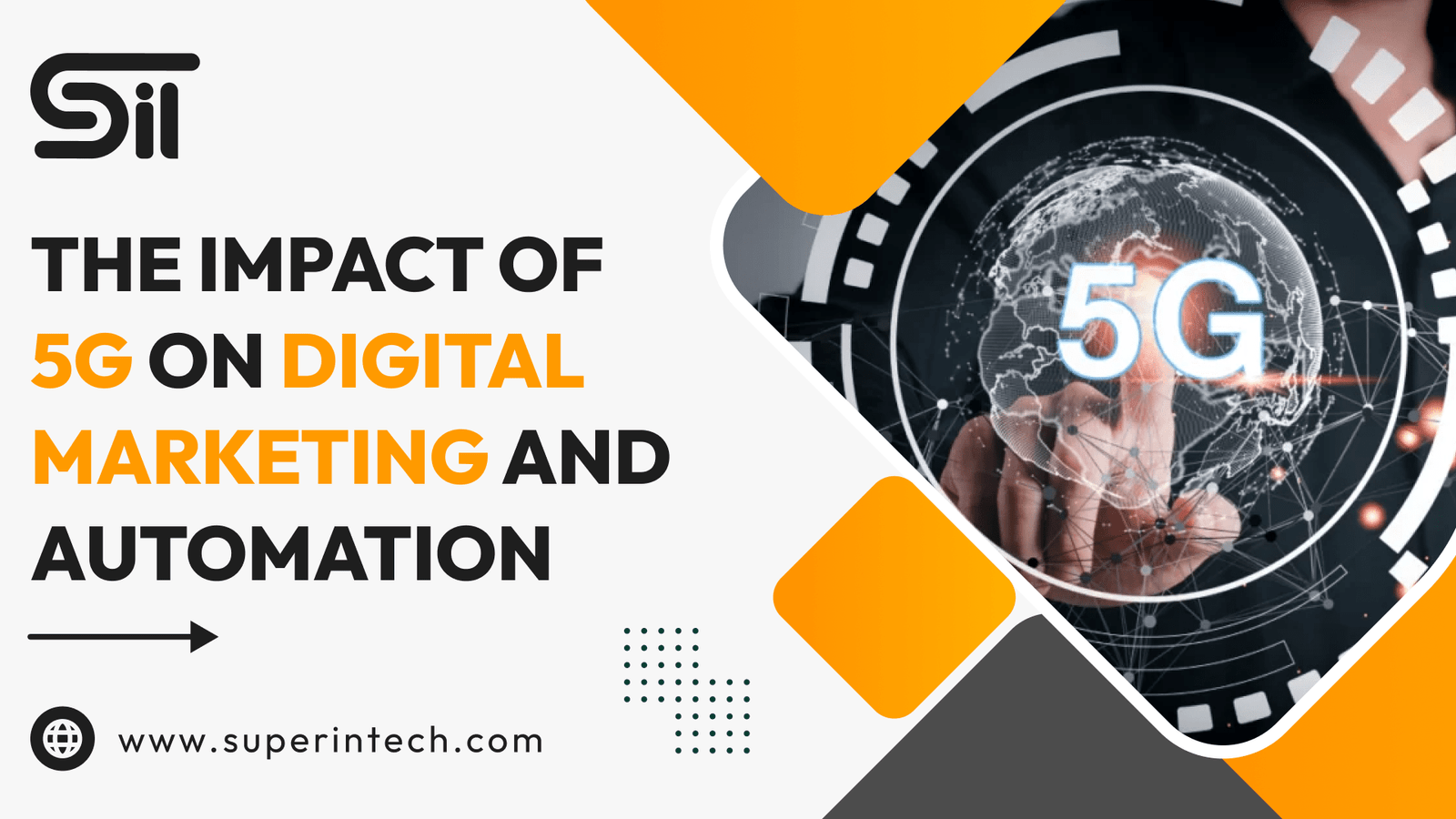Introduction:
As the world embraces the fifth generation of wireless technology (5G), the ripple effects across various industries are nothing short of transformative. In the realm of digital marketing and automation, 5G is emerging as a catalyst for revolutionary change. This blog post will delve into the unparalleled impact of 5G on digital marketing strategies and the automation landscape, unlocking new possibilities and redefining the way businesses connect with their audiences.
1. Unleashing Unprecedented Speeds:
The hallmark feature of 5G technology is its blazing-fast data speeds, far surpassing its predecessor, 4G. With the potential for gigabit-level speeds and low latency, 5G opens the door to seamless, real-time interactions. This accelerated speed translates into quicker load times for websites, apps, and multimedia content, fundamentally changing the user experience and presenting novel opportunities for marketers.
2. Enhanced Mobile Experiences:
As most online interactions now happen on mobile devices, the fast speed and low delay of 5G will greatly improve mobile experiences. We can instantly share richer content like high-definition videos and augmented reality (AR) applications, giving marketers a more engaging way to connect with audiences. This is very important as mobile devices become the main way consumers interact online.
3. Revolutionizing Video Content:
Video marketing is becoming more popular, and 5G is set to take it to new levels. The fast data speeds of 5G allow smooth streaming of high-quality, interactive video content. Marketers can now use new formats like 360-degree videos, virtual reality (VR) experiences, and live streaming with incredible clarity, helping them connect more deeply with their audience.
4. Internet of Things (IoT) Integration:
The proliferation of IoT devices is a key driver of the digital age, and 5G acts as an enabler for their seamless integration. Marketers can leverage the vast network capacity and low latency of 5G to connect with a myriad of IoT devices. This interconnected ecosystem provides opportunities for personalized, context-aware marketing campaigns based on real-time data from smart devices.
5. Advancements in Location-Based Marketing:
With the precision and speed offered by 5G, location-based marketing becomes more dynamic and accurate. Marketers can deliver hyper-localized content and promotions in real-time as users move through physical spaces. This level of precision enhances the relevance of marketing messages, making them more timely and personalized based on the user’s immediate surroundings.
6. Facilitating Artificial Intelligence (AI) and Machine Learning (ML):
The integration of 5G and AI/ML represents a powerful synergy in the realm of marketing automation. The high-speed, low-latency connectivity of 5G enhances the capabilities of AI algorithms, enabling faster processing and analysis of vast datasets. Marketers can leverage this amalgamation for more accurate customer profiling, predictive analytics, and personalized content recommendations.
7. Real-Time Personalization and Dynamic Content:
The real-time capabilities of 5G empower marketers to deliver personalized content with unprecedented immediacy. Dynamic content, which adapts in real-time based on user behaviour and preferences, becomes more feasible. This level of personalization creates a more immersive and tailored experience, fostering a deeper connection between brands and their audience.
8. Transforming Augmented Reality (AR) Experiences:
Augmented reality has been a promising frontier for marketers, and 5G’s arrival elevates its potential. High-speed, low-latency connections facilitate the seamless integration of AR into marketing strategies. From interactive product experiences to AR-driven advertising campaigns, marketers can captivate audiences with immersive and engaging content that blurs the lines between the digital and physical worlds.
9. Secure and Decentralized Data Processing:
Security and privacy concerns are paramount in the digital landscape. 5G’s ability to facilitate secure and decentralized data processing is a game-changer. Edge computing, made more efficient by 5G, allows data processing to occur closer to the source, reducing latency and enhancing security. This is very crucial as data privacy regulations become more stringent.
10. Challenges and Considerations:
5G technology promises substantial benefits, yet its implementation encounters numerous obstacles. Infrastructure development, the cost of upgrading networks, and global standardization are hurdles that need to be overcome. The increased speed and volume of data require robust cybersecurity measures to safeguard sensitive information.
Conclusion:
The arrival of 5G technology is transforming digital marketing and automation. Its fast speeds, low latency, and reliable connectivity open up new opportunities for marketers to create more personalized and engaging experiences for their audiences.
As businesses transition to the 5G era, it’s important to stay flexible, embrace new technologies, and explore the potential of 5G, AI, and IoT. Marketers who use 5G technology will experience great benefits. The future of digital marketing is evolving with these advancements.

